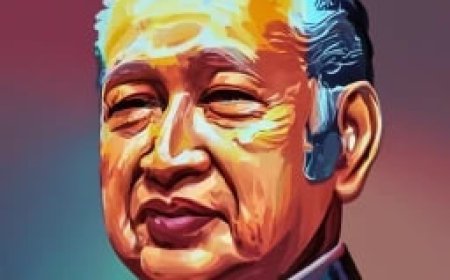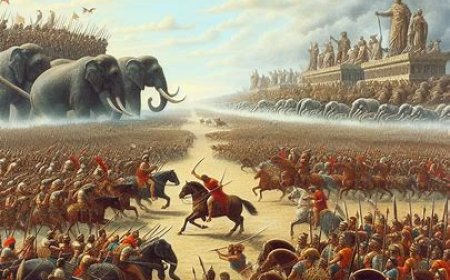Nepotism and Political Intrigue: The Abbasid Dynasty in the Spotlight
One example of nepotism in the Abbasid Dynasty was through the appointment of officials based on family relationships rather than ability or qualifications. In several periods of the caliphate, especially when the dynasty experienced divisions and internal competition, the caliphs tended to give important positions to their family members without regard to competence or experience.

The Abbasid dynasty, which ruled from 750 to 1258, was a continuation of the Umayyad dynasty and was one of the most important periods in Islamic history. Founded by Abu al-Abbas al-Saffah, the Abbasid dynasty established a new capital in Baghdad, creating a golden period of Islam known as the Islamic Golden Age or the Abbasid Glorious Age. The peak of the Abbasid glory occurred under the leadership of Harun al-Rashid, who was known as a just caliph who promoted prosperity, wisdom and culture.
During the reign of Harun al-Rashid and his son, Al-Ma'mun, the Abbasids became an intellectual center with the establishment of Bait al-Hikmah, the leading library and scientific research center of its time. However, in the 9th and 10th centuries, this dynasty weakened. There were internal power struggles between members of the Abbasid family, and effective control changed hands between competing groups. At the same time, attacks from outside, especially by Vikings and Turks, increased pressure on the caliphate.
The fall of the Abbasid dynasty in the Middle East in 1258 was a consequence of the brutal invasion launched by the Mongol troops under the leadership of Hulagu Khan. At that time, the Abbasid Caliphate experienced political and military weakening, with the caliphate increasingly losing control of the autonomous regions around it. The threat of Mongol expansion further worsened the situation, and in 1256, Hulagu Khan began his military campaign against Islamic territory. In 1258, Mongol troops succeeded in conquering Baghdad, the capital of the Abbasid Caliphate. Caliph Al-Mustasim was captured and executed, marking the official end of the Abbasid dynasty. The siege and fall of Baghdad was also accompanied by massive massacres and the destruction of various cultural heritages, including the famous Bait al-Hikmah library. Its long-term impacts included the collapse of the Abbasid political and cultural center, the formation of the Ilkhanate as part of the Mongol Empire, and political chaos and significant loss of Islamic power. The fall of the Abbasid dynasty in 1258 was a historical milestone that ended their political and religious dominance in the Middle East.
The Abbasid dynasty faced several challenges and problems during its reign, including acts of fraud within the government. Some of the frauds that can be identified involve various aspects of political, economic and social life. Some examples include:
In summary, the factors that contributed to the weakening and eventual fall of the Abbasid dynasty were as follows:
1. Bureaucratic Corruption
Fraud in the form of corruption among government officials and the bureaucracy can harm state finances and trigger dissatisfaction among the people. The following are some examples of corrupt practices that can be found during that period: Collection of Bribes and Bestiaries (Gifts), Diversion of Tax Funds, Abuse of Power in Appointing Officials, Theft of Public Assets, Manipulation of Contracts and Tenders, Trading in Positions and Titles, Corruption in the Judicial System.
2. Nepotism
Granting positions and power based on family or personal relationships, rather than on qualifications and abilities, can lead to a reduction in government efficiency.
One example of nepotism in the Abbasid Dynasty was through the appointment of officials based on family relationships rather than ability or qualifications. In several periods of the caliphate, especially when the dynasty experienced divisions and internal competition, the caliphs tended to give important positions to their family members without regard to competence or experience.
This can be found in the appointment of governors, military commanders, or financial officials who are often appointed based on close blood ties to the caliph, not based on leadership capacity or administrative expertise. This is detrimental to the stability and efficiency of government, because appointments based on family relationships do not always guarantee the abilities or competencies needed to lead and manage a particular region or field.
3. Tribal and Dynastic Wars
Tribal and dynastic wars in the context of the Abbasid Dynasty refer to a series of internal conflicts among members of the family and the dynasty itself that led to power disputes and struggles for control of the Caliphate. Although the Abbasid dynasty was initially founded with great support and popularity, as time went by, internal strife and divisions became increasingly problematic and contributed to the weakening of the caliphate.
Power Struggle
From the beginning, the Abbasid dynasty experienced internal instability due to competition and ambition among family members. Power struggles between members of the Abbasid family often resulted in conflict and instability.
The Influence of the Daylam Nation
The Daylam, an ethnic group consisting mainly of mercenaries, had a significant role in the politics of the Abbasid dynasty. They are often the decisive countervailing force in power disputes and succession conflicts.
Fragmentation and Autonomous Approaches
There were divisions among members of the Abbasid family, with some members supporting or leading certain areas autonomously, starting small dynasties in various regions. This led to the breakdown of central power and a decline in the caliph's authority.
Civil War and Political Intrigue
A number of civil wars occurred as a direct result of dynastic conflicts, in which competing armies from different family members came into contact in large-scale battles. Political intrigue at the Abbasid court was also a major factor in internal rivalries and conflicts.
The tribal and dynastic wars that occurred in the Abbasid dynasty were one of the main factors that weakened the structure of the caliphate.
4. Excessive Taxation
Imposing unfair or excessive taxes on the people can create dissatisfaction and harm the economy, especially for the lower classes of society.
5. Social Inequality
The growing social gap between the elite and ordinary people can create social instability and dissatisfaction which can affect the stability of government.
6. Decrease in Leader Quality
Selection of leaders based on non-competence factors, such as heredity or political connections, without paying attention to leadership abilities, can be detrimental to the quality of government.
7. Inability to Respond to External Threats
The inability to effectively respond to external threats, such as Mongol attacks, could be considered a form of cheating or a weakness in defense planning and strategy.
The Abbasid dynasty, with all its glory and decline, reflects the complexity of Islamic history. The golden peak of the Abbasids made a major contribution to the development of science, literature and art in Islamic history, while the decline and fall of the dynasty demonstrated internal and external challenges that could change the direction of a once powerful caliphate.
(source: chatgpt)
What's Your Reaction?
























































